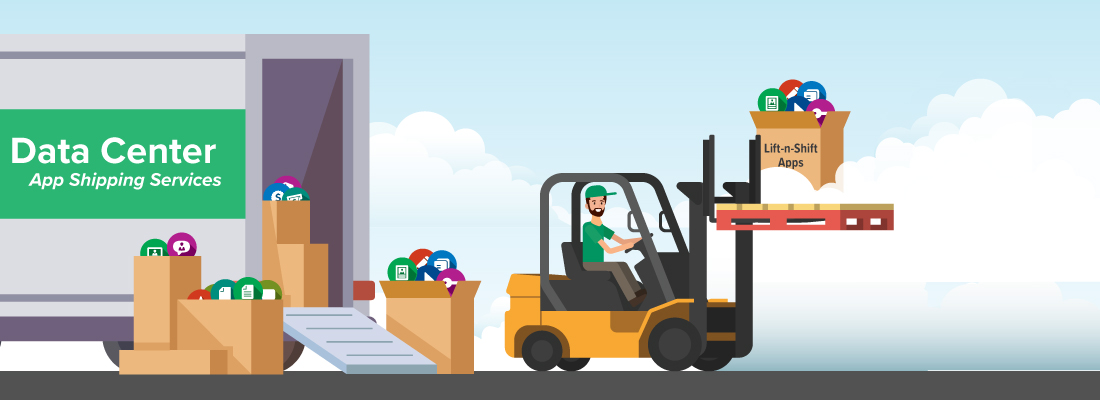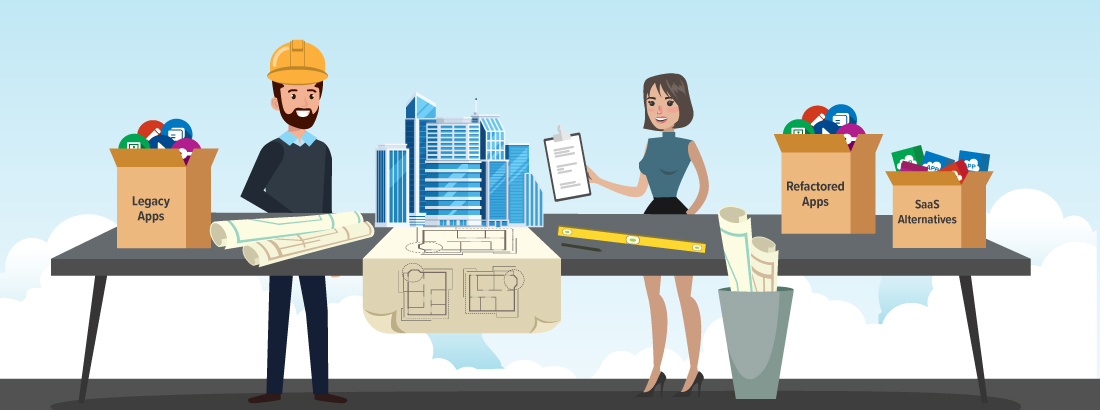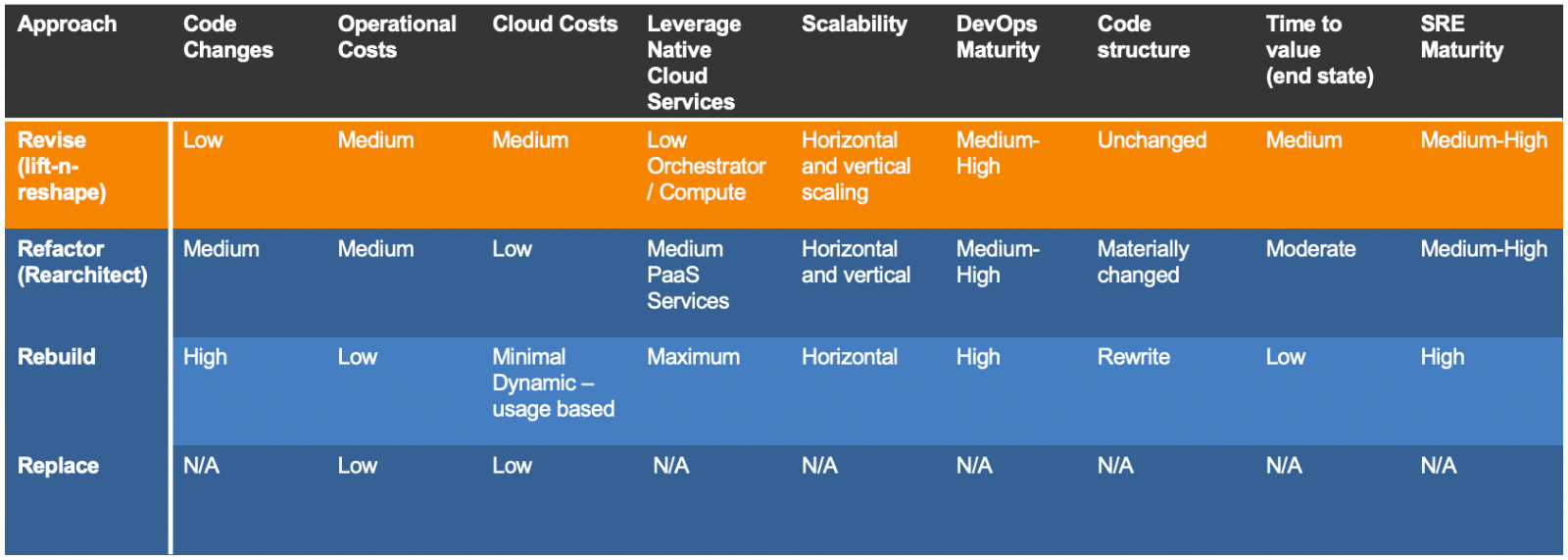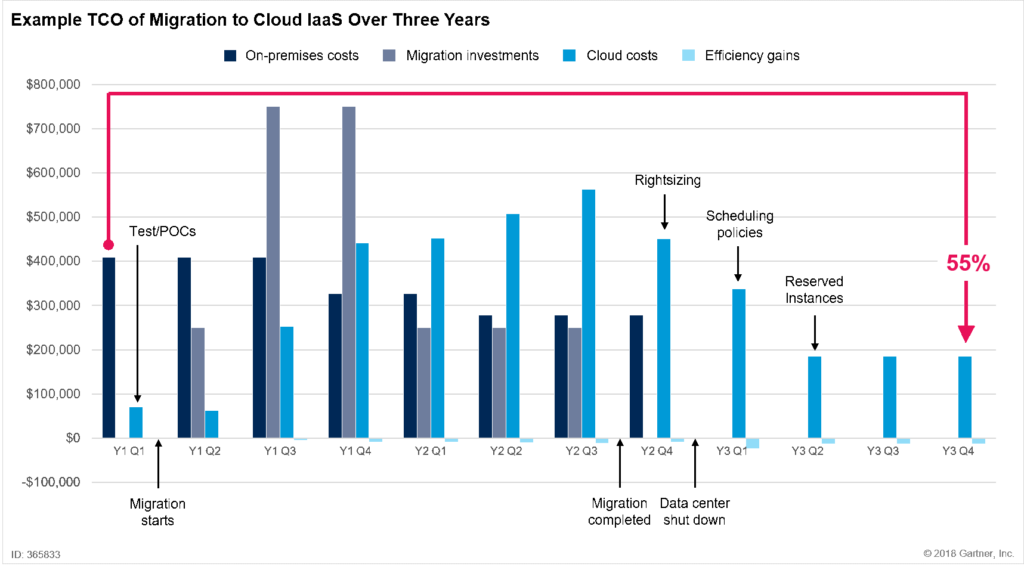Sound Familiar?
It’s not a sentiment you would expect from most IT decision-makers. However, it’s something we hear from an increasing number of organizations.
The benefits of a well-thought-out cloud transformation roadmap are not lost on them.
- They know that, in an ideal world, they ought to start with an in-depth assessment of their application portfolio, in line with the best practice – “migrate your capabilities, not apps or VMs”.
- They also realize the need to develop a robust cloud governance model upfront.
- And ultimately, they understand the need to undertake an iterative migration process that takes into account “organizational change management” best practices.
At the same time, these decision-makers face real challenges with their existing IT infrastructure that simply cannot wait months and years for a successful cloud transformation to take shape. They can’t get out of their on-premises data centers soon enough. This notion isn’t limited to organizations with fast-approaching Data Center (DC) lease renewal deadlines or end of support products, either.
So, how do we balance the two competing objectives:
- Immediate need to move out of the DC
- Carefully crafted long-term cloud transformation
A Two-Step Approach to Your Cloud Transformation Journey
From our experience with a broad range of current situations, goals, and challenges, we recommend a two-step cloud transformation approach that addresses both your immediate challenges and the organization’s long-term vision for cloud transformation.
- Tactical “Lift-n-Shift” to the Cloud – As the name suggests, move the current DC footprint as is (VMs, databases, storage network. etc.) to Azure
- Strategic Cloud Transformation – Once operational in the cloud, incrementally and opportunistically move parts of your application portfolio to higher-order Azure PaaS/cloud-native services
Tactical “Lift-n-Shift” to the Cloud

On the surface, step #1 above may appear wasteful. After all, we are duplicating your current footprint in Azure. But keep in mind that step #1 is designed for completion in days or weeks, not months or years. As a result, the duplication is minimized. At the same time, step #1 immediately puts you in a position to leverage Azure capabilities, giving you tangible benefits with minimal to no changes to your existing footprint.
Here are a few examples of benefits:
- Improve the security posture – Once you are in Azure, you tap into security capabilities such as intrusion detection and denial of service attack solely by being in Azure. Notice that I deliberately did not cite Security Information and Event Management (SIEM) tools like Azure Sentinel. Technically you can take advantage of Azure Sentinel for on-premises workloads.
- Replace aging hardware – Your hardware may be getting old but isn’t old enough for a Capex-powered refresh. Moving your VMs to Azure decouples you from the underlying hardware. “But won’t that be expensive, since you are now paying by usage per minute?” you ask. Not necessarily and certainly not in the long run. Consider options like Reserved Instance (RI) pricing that can offer an up to 80% discount based on a one- or three-year commitment.
Furthermore, you can combine RI with Azure Hybrid Benefits (AHUB) which provides discounts for licenses already owned. Finally, don’t forget to take into account the savings from decreased needs for power, networks, real estate, and the cost of resources to manage all the on-premises assets. Even if you can’t get out of the DC lease completely, you may be able to negotiate a modular reduction of your DC footprint. Please refer to Gartner research that suggests that over time, the cloud can become cost-effective.
- Disaster Recovery (DR) – Few organizations have a DR plan setup that is conducive for ongoing DR tests. Having an effective DR plan is one of the most critical responsibilities of IT. Once again, since geo-replication is innate to Azure, your disks are replicated to an Azure region that is at least 400 miles away, by default. Given this, DR is almost out-of-the-box.
- Extended lease of life on out of support software – If you are running an Operating System (OS), such as Windows Server 2008 or SQL Server 2008, moving to Azure extends the security updates for up to three years from the “end of support” date.
- Getting out of the business of “baby-sitting” database servers – Azure managed instances offer you the ability to take your existing on-premises SQL Server databases and move them to Azure with minimal downtime. Once your database is an Azure SQL Managed Instance, you don’t have to worry about patching and backup, thereby significantly reducing the cost of ownership.
- Take baby steps towards automation and self-service – Self-service is one of the key focus areas for most IT organizations. Once again, since every aspect of Azure is API driven, organizations can take baby steps towards automated provisioning.
- Get closer to a data lake – I am sure you have heard the quote “AI is the new electricity”. We also know that Artificial Intelligence (AI) needs lots and lots of data to train the Machine Learning (ML) algorithms. By moving to Azure, it is that much easier to capture the “data exhaust” coming out the applications in a service like Azure Data Lake. In turn, Azure Data Lake can help turn this data into intelligence.
Strategic Cloud Transformation

Once you have completed step #1 by moving your on-premises assets to the cloud, you are now in a position to undertake continuous modernization efforts aligned to your business priorities.
Common approaches include:
- Revise – Capture application and application tiers “as-is” in containers and run on a managed orchestrator like Azure Kubernetes Service. This approach requires minimal changes to the existing codebase. For more details of this approach, including a demo, read Migrate and Modernize with Kubernetes on Azure Government.
- Refactor – Modernize by re-architecting to target Platform as a Service (PaaS) and “serverless” technologies. This approach requires more significant recoding to target PaaS services but allows you to take advantage of cloud provider managed services. For more information, check out our “Full PaaS” Approach to Modernizing Legacy Apps.
- Rebuild – Complete rewrite of the applications using cloud-native technologies like Kubernetes, Envoy, and Istio. Read our blog, What Are Cloud-Native Technologies & How Are They Different from Traditional PaaS Offerings, for more information.
- Replace – Substitute an existing application, in its entirety, with Software as a Service (SaaS) or an equivalent application developed using a no-code/low-code platform.
CHECK OUT OUR WHITEPAPER & LEARN ABOUT CLOUD-BASED APP MODERNIZATION APPROACHES
The following table summarizes the various approaches for modernization in terms of factors such as code changes, operational costs, and DevOps maturity.

Azure Migration Program (AMP)
Microsoft squarely aligns with this two-step approach. At the recent Microsoft partner conference #MSInspire, Julia White announced AMP (Azure Migration Program).
AMP brings together the following:
- Azure-focused partners like AIS
- Tools like Azure Migrate, to assess and migrate workloads
- Azure Hybrid Benefit and free Extended Security Updates for Windows Server 2008 and SQL Server 2008
Wrapping Up
A two-step migration offers a programmatic approach to unlock the potential of the cloud quickly. You’ll experience immediate gains from a tactical move to the cloud and long-term benefits from a strategic cloud transformation that follows. Microsoft programs like AMP, combined with over 200+ Azure services, make this approach viable. If you’re interested in learning more about how you can get started with AMP, and which migration approach makes the most sense for your business goals, reach out to AIS today.
GET YOUR ORGANIZATION ON THE RIGHT TRACK TO TRANSFORMATION. CONTACT AIS TODAY TO DISCUSS YOUR OPTIONS.







